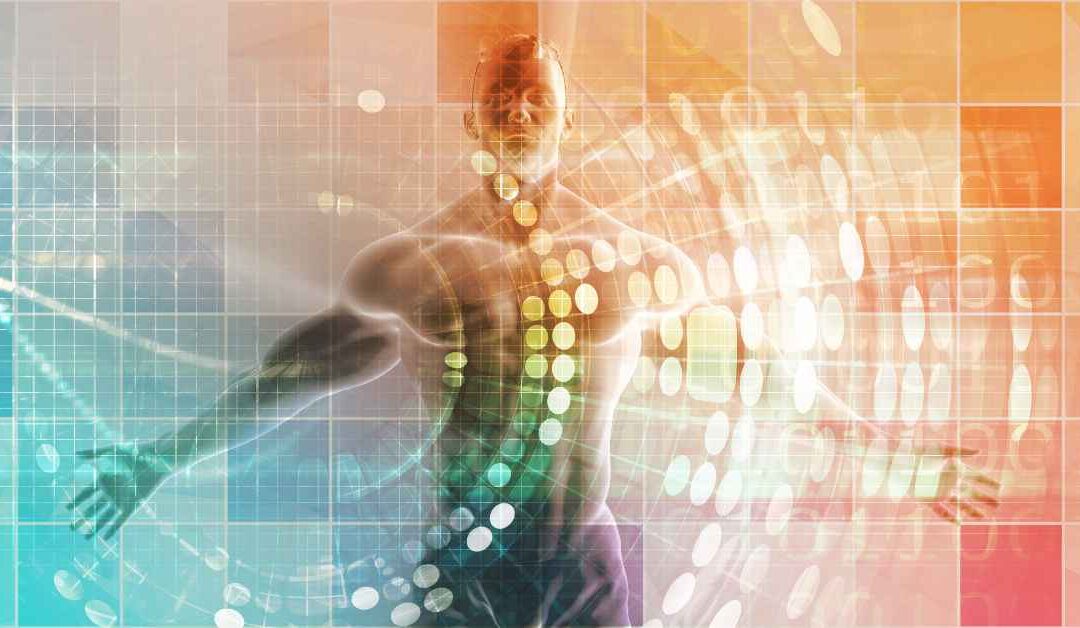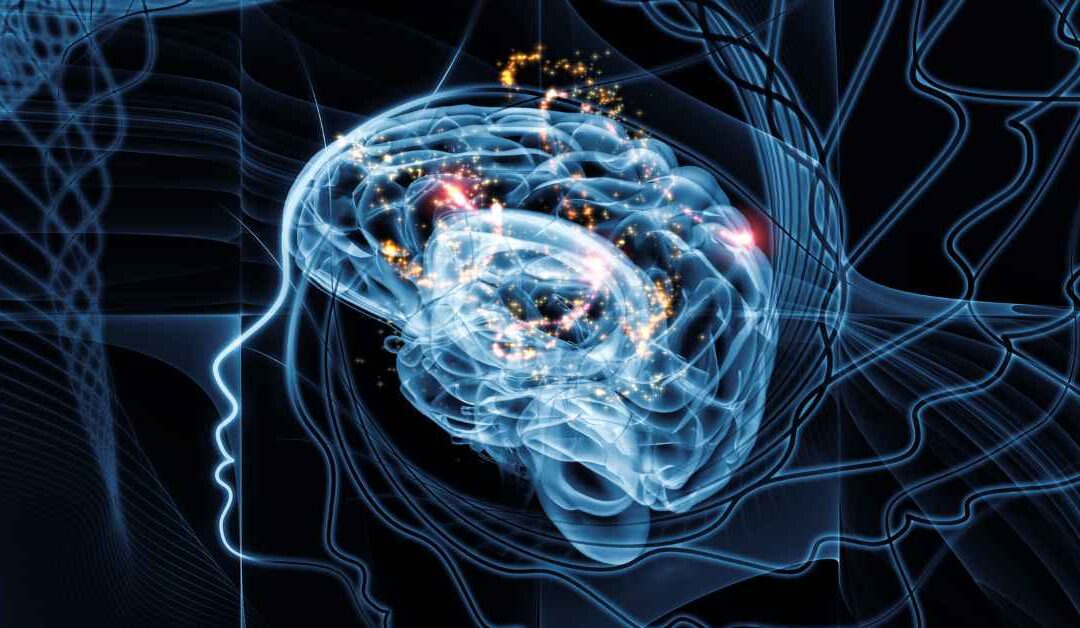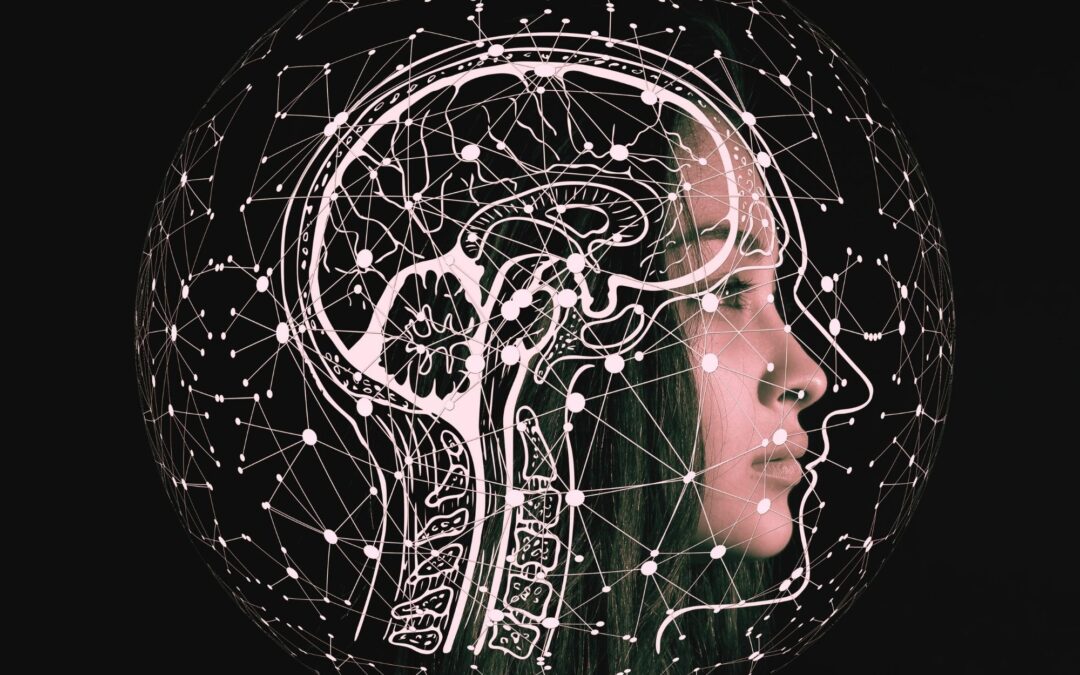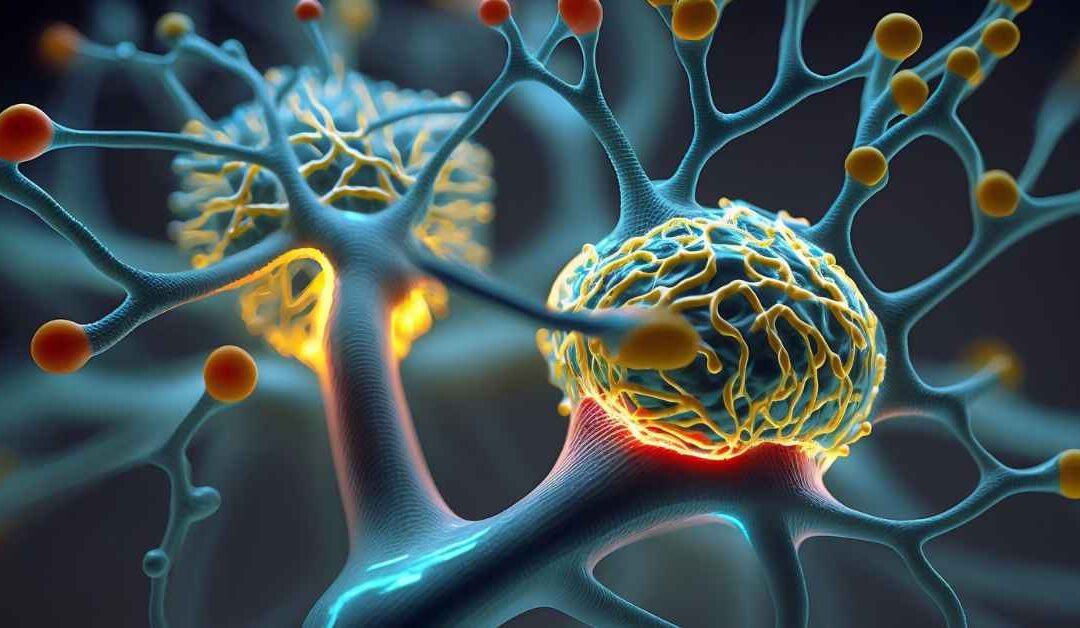Unleash the Potential of the Brain: Neuroplasticity In Action
Understanding the Brain as a Tool
In the vast landscape of human potential, our brain stands as a remarkable tool that holds immense power to shape our lives. It serves as the command center, processing information, and governing our actions and behaviors. However, a profound realization emerges: we are not entirely our minds or brains; rather, we are consciousness utilizing the brain as a tool. This revelation opens the door to a higher level of awareness, where we can consciously direct our thoughts and actions. By recognizing the brain’s role as an instrument, we empower ourselves to reprogram and download new software, embarking on a transformative journey of self-discovery and growth.
The Power of Neuroplasticity in Changing Habits
At the core of our brain’s adaptability lies the phenomenon of neuroplasticity. This intrinsic capability allows the brain to reorganize itself based on our experiences and actions, providing a gateway to change our habits and transform our lives. Harnessing the power of neuroplasticity enables us to modify existing neural pathways or create new ones, paving the way for positive behavioral shifts and personal growth.
Exploring the Concept of Consciousness and Brain as a Tool
Delving deeper into the connection between consciousness and the brain as a tool brings about a profound shift in perspective. The brain serves as an instrument through which consciousness interacts with the external world. Understanding this relationship empowers us to consciously direct our thoughts and actions, utilizing neuroplasticity to rewire our brain in pursuit of personal development and habit change. It liberates us from the constraints of limiting beliefs and empowers us to shape our reality by reprogramming the brain.
The Science of Neuroplasticity
Definition and Mechanisms of Neuroplasticity
Neuroplasticity, often referred to as brain plasticity, is the brain’s remarkable ability to reorganize and adapt based on our experiences and actions. It involves two primary mechanisms: synaptic plasticity and structural plasticity. Synaptic plasticity deals with the strengthening or weakening of connections between neurons, while structural plasticity involves the creation of new neurons and connections. These mechanisms enable the brain to constantly adapt, learn, and evolve throughout life.
How Neural Pathways Are Formed and Strengthened
Neural pathways are the highways of information flow in the brain, forming the foundation of our habits and behaviors. Through repeated patterns of thought and behavior, certain pathways are reinforced, leading to the formation of habits. Understanding the process of habit formation helps us identify triggers (cues), routines, and rewards that drive our behaviors, laying the foundation for effective habit change.
The Role of Synaptic Plasticity in Rewiring the Brain
Synaptic plasticity plays a pivotal role in the brain’s ability to adapt. It involves the release of neurotransmitters that modulate the strength of connections between neurons. As we engage in specific activities or thoughts, synaptic connections are either strengthened or weakened, allowing the brain to rewire itself. Understanding synaptic plasticity enlightens us on the power of repetition and practice in cultivating new habits and fostering positive behavioral changes.
Neurogenesis and the Creation of New Neurons
Contrary to the long-standing belief that the brain is fixed, research has unveiled the phenomenon of neurogenesis—the creation of new neurons throughout life. Particularly in the hippocampus, a brain region associated with learning and memory, neurogenesis occurs. Engaging in mentally stimulating activities, adopting a growth mindset, and even engaging in regular physical exercise can promote neurogenesis, fostering cognitive vitality and adaptive behavior.
Harnessing the Power of Neuroplasticity for Habit Change
The Habit Loop: Cue, Routine, Reward
The habit loop is a fundamental concept in habit change. Understanding its components—cue, routine, and reward—allows us to decipher the intricacies of our habits. Identifying triggers that initiate the routine and the subsequent rewards we receive is key to altering habits effectively. By inserting new routines into existing cues and linking them with meaningful rewards, we facilitate the rewiring process.
Identifying Negative Habits and Their Triggers
The first step toward habit change is recognizing negative habits and their triggers. Self-awareness grants us the ability to acknowledge behaviors that no longer serve us and the situations that instigate them. Armed with this insight, we can develop proactive strategies to address these triggers and replace negative habits with positive alternatives.
Introducing New Habits and Reprogramming the Brain
To initiate habit change, we must focus on introducing new, constructive habits. The repetition of new behaviors lays the groundwork for building fresh neural pathways, effectively rewiring the brain. By committing to these practices and being consistent, we pave the way for lasting changes.
Leveraging Mindfulness and Intention in Habit Formation
Mindfulness is a potent tool in habit formation. By staying present and aware, we can consciously choose new behaviors and activate neuroplasticity to reinforce positive habits. Meditation and other mindfulness practices enhance our ability to respond consciously to triggers, supporting habit change.
Neuroplasticity Exercises for Habit Change
Visualization and Mental Rehearsal
Visualization is a powerful exercise to rewire the brain. Creating vivid mental images of ourselves engaging in desired behaviors strengthens neural pathways associated with those actions. By consistently visualizing these positive outcomes, we condition our brain to embrace new habits.
Affirmations and Positive Self-Talk
Affirmations, like lines of code for our brains, challenge negative beliefs and reinforce positive behaviors. By engaging in positive self-talk and repeating empowering affirmations, we activate neuroplasticity, fostering new neural pathways. For example, someone struggling with self-doubt can affirm, “I am confident and capable.”
Cognitive Restructuring
Cognitive restructuring involves identifying and reframing negative thought patterns. By replacing limiting beliefs with constructive ones, we can rewire the brain’s neural circuits, shifting our focus towards optimism and empowerment.
Behavior Rehearsal and Role-Playing
Practice makes perfect, and behavioral rehearsal allows us to refine new habits in our brain’s theater. Repeatedly simulating positive actions builds neural pathways that support the actual implementation of these behaviors in real-life scenarios.
Environmental Modification
Our environment plays a pivotal role in shaping our habits. Modifying our surroundings to support the desired behaviors can facilitate the rewiring process. For instance, setting up a designated exercise space or creating a calming area for meditation encourages consistency in habit formation.
The Role of Consistency and Patience
Understanding the Timeframe for Neuroplastic Changes
Neuroplastic changes do not happen overnight. It requires consistency and patience to foster lasting rewiring in the brain. Understanding that neuroplasticity is a gradual process enables us to stay committed to our habit change journey.
Committing to Daily Practice and Routine
Consistency is key to harnessing the power of neuroplasticity. Engaging in daily practices and integrating habit change routines into our daily lives enhances the effectiveness of rewiring the brain.
Embracing Small Wins and Celebrating Progress
Acknowledging and celebrating the progress we make along the way reinforces positive behaviors and motivates us to continue the habit change journey. Embracing small wins builds a sense of achievement and boosts our confidence in the process.
Personalizing Your Neuroplasticity Journey
Recognizing Individual Differences and Preferences
Each individual has unique needs and preferences when it comes to habit change. Recognizing and respecting these individual differences allows us to tailor neuroplasticity exercises to suit our specific requirements.
Experimenting with Different Techniques and Approaches
Neuroplasticity offers a diverse range of techniques and approaches. Embracing experimentation with various exercises allows us to discover what resonates best with us. Whether it’s visualization, affirmations, or cognitive restructuring, finding the most effective tools enhances the rewiring process.
Adapting Strategies Based on Feedback and Results
As we progress in our habit change journey, it’s crucial to evaluate our experiences and outcomes. Adapting our strategies based on feedback and results fine-tunes the rewiring process, ensuring we remain on the path of growth and transformation.
Integrating Neuroplasticity Techniques into Daily Life
Creating a Habit Change Action Plan
Developing a structured action plan for habit change fosters commitment and accountability. Setting clear goals, outlining the chosen neuroplasticity exercises, and establishing a timeline for implementation optimize the effectiveness of the rewiring process.
Building a Supportive Routine and Schedule
Incorporating neuroplasticity exercises into a daily routine reinforces the rewiring process. Integrating exercises seamlessly into our schedules ensures consistency and facilitates habit formation.
Practicing Self-Reflection and Continuous Learning
Self-reflection is a vital aspect of the neuroplasticity journey. Regularly evaluating our progress, challenges, and achievements aids in refining our approach to habit change. Continuous learning enhances our understanding of the brain’s plasticity, empowering us to optimize the rewiring process continually.
Rewiring Your Path to a Transformed Life
Rewiring your brain through neuroplasticity exercises is a transformative journey that offers boundless opportunities for personal growth and positive change. By recognizing the brain as a tool and embracing the power of consciousness, you hold the key to reshaping your habits and transforming your life. Armed with a deeper understanding of the science behind neuroplasticity and a toolkit of effective exercises, you are equipped to unlock your brain’s full potential.
As you commit to consistency and patience, celebrate your progress, and personalize your approach, you pave the way for lasting and meaningful habit change. Embrace the opportunity to grow and evolve, and watch as your brain rewires itself to support the life you envision. The rewiring process is within your grasp—embrace it, and step into a brighter future of self-discovery and empowerment.

Written by Jordan Buchan
Jordan is the founder of Conscious Cues. Her work is centered around the mind-body connection as it is explored through neuroscience, yoga, meditation, and other healing practices.

The Science of Grounding: A Comprehensive Guide to the Benefits of Being Barefoot
Grounding, also known as earthing, is a practice that involves connecting with the Earth's surface by being barefoot or using conductive materials in direct contact with the ground. This practice has gained significant attention in recent years due to its potential...

DMT: The Dream Molecule Unraveled – A Comprehensive Exploration of Science and Spirituality
Explore the captivating term of DMT, also known as dimethyltryptamine, often referred to as the "dream molecule" due to its profound hallucinogenic effects and association with dream-like experiences. This naturally occurring psychedelic compound is found in certain...

The Science of Breathing: Exploring the Power of Breathwork
When you hear the word 'breathwork,' what comes to mind? If you're like most people, your first thought is probably something along the lines of 'that's hippie-dippy stuff.' However, what if we told you that breathwork is grounded in science and holds significant...

The Neuroscience of Mindfulness: How Meditation Impacts the Brain
Mindfulness, a centuries-old practice rooted in ancient contemplative traditions, has gained significant popularity in modern times for its profound impact on mental and physical well-being. At its core, mindfulness involves being fully present in the moment,...

20 Affirmations for Your Inner Child
Reconnecting with your inner child is a profound journey of self-compassion and healing. Affirmations can serve as powerful tools to nurture and support your inner child, reminding them of their inherent worth and strength. Use these affirmations regularly to foster a...

Inner Child Work: Exercises You Can Do Today to Reconnect and Heal
Reconnecting with your inner child is a powerful journey of self-discovery and healing. By acknowledging and nurturing your inner child's needs, you can release emotional burdens and cultivate a deeper sense of self-love and acceptance. Here are impactful inner child...

Journal Prompts for Inner Child Work: Embracing Your Inner Self
Welcome to this transformative journey of inner child work. In this practice, we will explore your inner child's needs, emotions, and desires, fostering healing and self-discovery. Take a deep breath, find a comfortable space, and let these journal prompts guide you...

The Healing Power of Sound: Exploring Sound Therapy for Stress Relief
In the pursuit of holistic well-being, individuals are increasingly turning to alternative therapies to find relief from stress and promote relaxation. One such practice gaining popularity is sound therapy, also known as sound healing or vibrational sound therapy. But...

The Nervous System Explained: Unveiling the Wonders Within
Prepare for an exciting journey into the intricate world of the nervous system. In this comprehensive guide, we will explore the captivating complexities of this remarkable network, unraveling its secrets and unveiling its indispensable role in regulating your body's...

Nervous System Dysregulation Explained: What It Is, Why It Happens, & How to Fix It
Have you ever felt like your brain and body are at odds with each other? Do you find yourself overwhelmed, anxious, and out of control more often than not? If so, you may be experiencing nervous system dysregulation. Imbalances in this system can be the source of...

